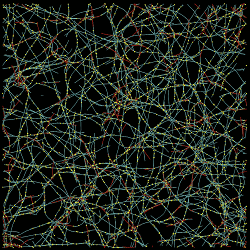Force generation and contraction of the actin cytoskeleton
Living cells need to generate mechanical forces to perform their physiological functions. The ability of cells to generate forces originates mainly from the actin cytoskeleton. Myosin motor proteins walk on actin filaments (F-actin) in the actin cytoskeleton by consuming chemical energy stored in ATP, which results in tensile forces. This actomyosin contractility is a universal mechanism of force generation in both muscle and non-muscle cells. Due to the actomyosin contractility, mechanical properties of the actin cytoskeleton in cells are driven out of thermal equilibrium. We have studied the force generation and contraction of the actin cytoskeleton facilitated by molecular motors.

Publications:
C. Borau et al., 2012, PLOS One, 7(11): e49174
T. Kim, 2015, Biomech Model Mechanobiol, 14(2): 345-355
W. Jung et al., 2015, Comput Part Mech, 2(4): 317-327
M. Mak et al., 2016, Nat Commun, 7: 10323
T. Bidone et al., 2017, PLOS Comput Biol, 13(1): e1005277
J. Li et al., 2017, Soft Matter, 13: 3213-3220
Q. Yu et al., 2018, Biophys J, 115(10): 2003-2013
A. Matsuda et al., 2019, Biophys J, 116: 2161-2171
W. Jung et al., 2019, Cytoskeleton, 76(11-12): 517-531
W. Jung et al., 2020, Soft Matter, 16: 1548-1559
